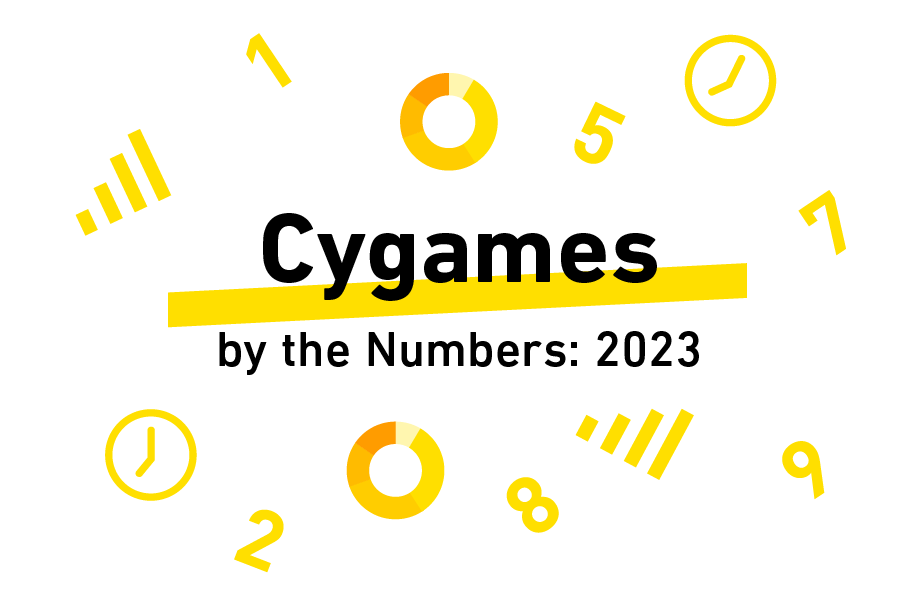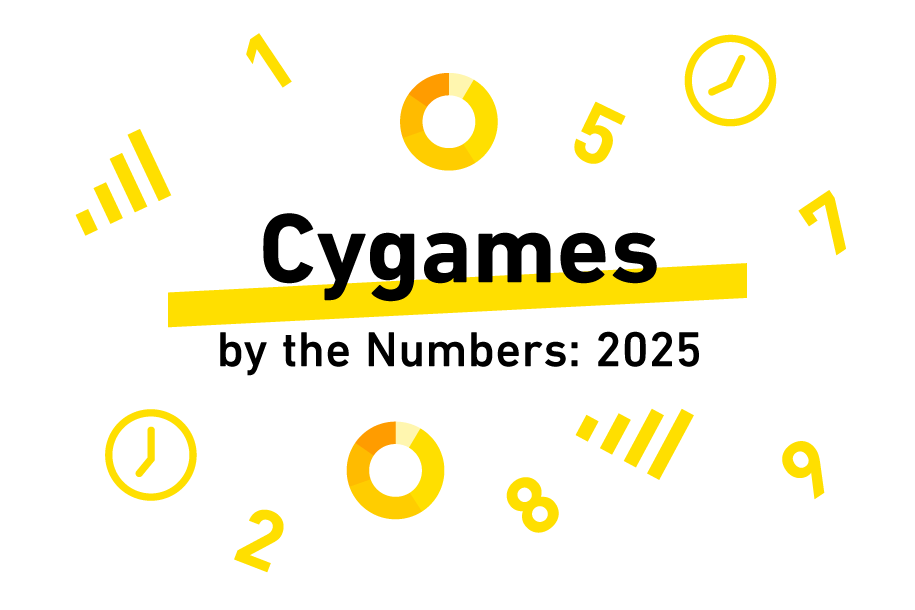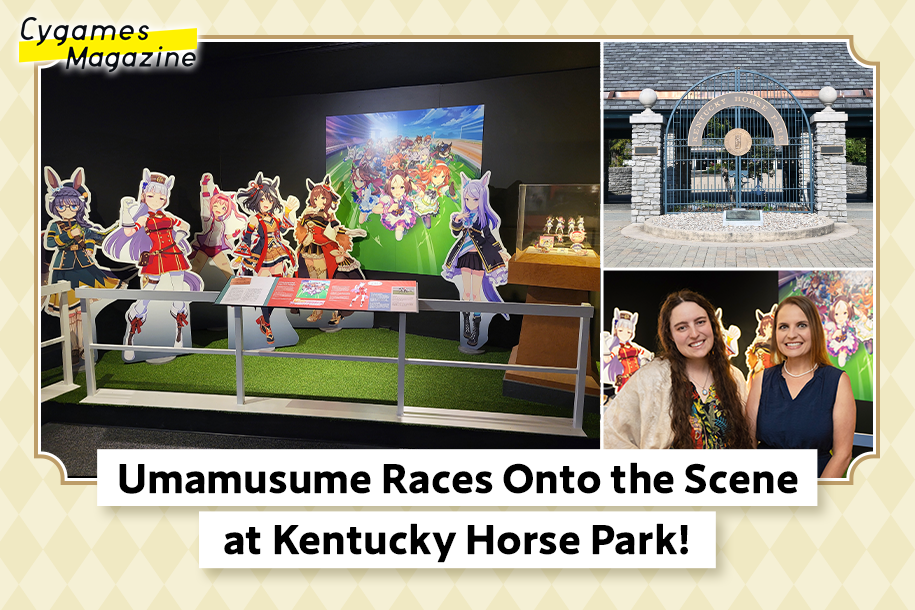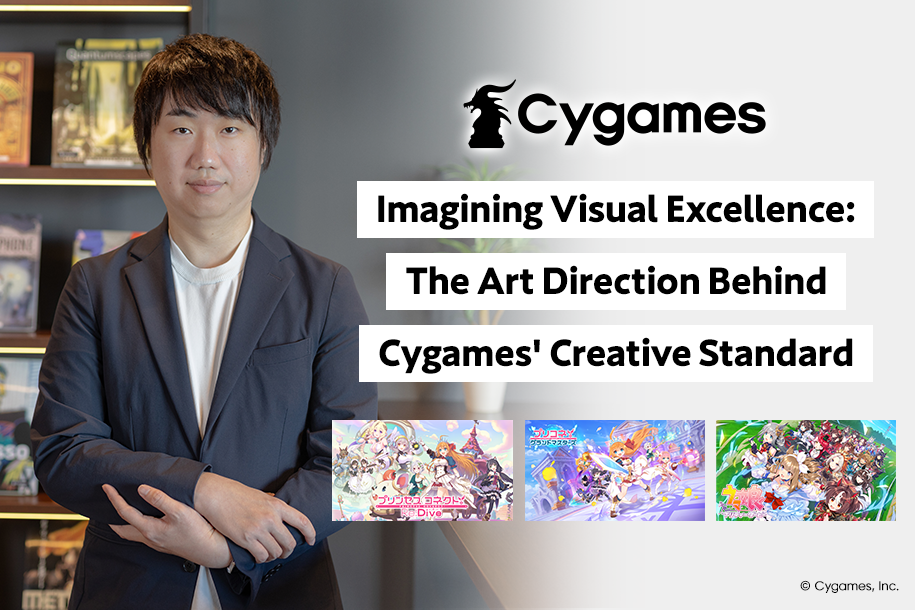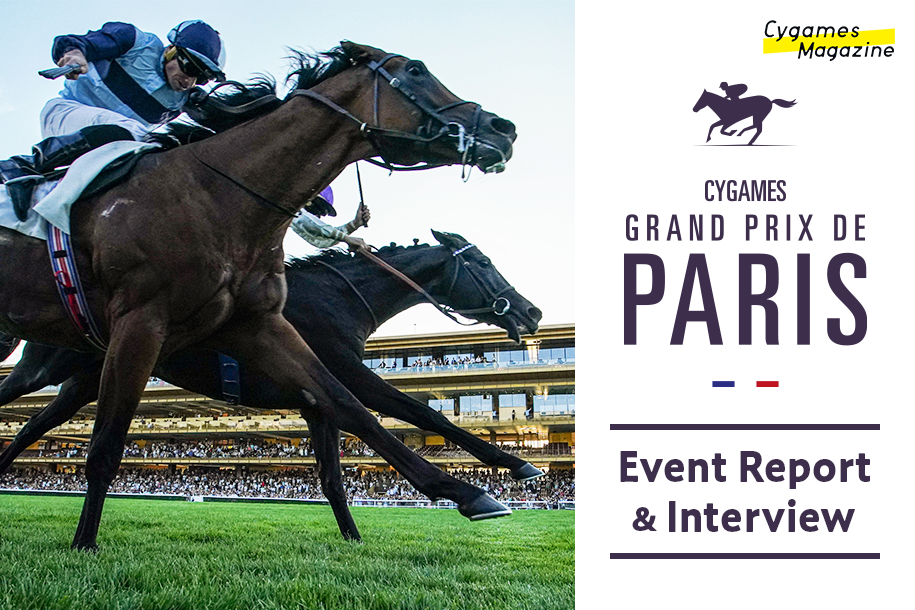The Osaka Cygames motion capture studio evolves every day!
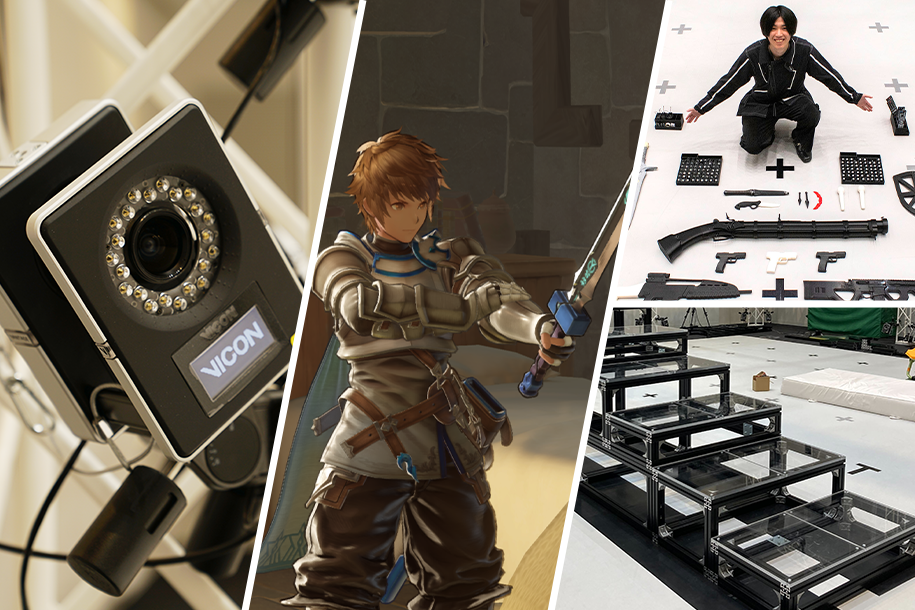
Aiming to provide the best in entertainment, Cygames has always worked to actively invest in its development facilities. The motion capture studio at Osaka Cygames—previously introduced as a state-of-the-art facility in Cygames Facilities Vol. 5—continues to be improved in order to better incorporate ever-evolving technology. In addition to comments from the studio staff, we will introduce these ongoing efforts based on information revealed in an October 2023 promotional video, as well as a talk from CEDEC+KYUSHU2023, which was held at the end of November.
About the motion capture studio in Osaka
Osaka Cygames was established as a base for console game development and is always striving to grow as it develops high-end titles. The motion capture studio was built due to the advantages of coordinating between internal departments, along with the flexibility of handling everything from recording dates, content review, and material exchange internally. The motion capture studio has been fully operational since March 2022.
Many of the character motions in Granblue Fantasy: Relink (Relink), which was released on February 1, 2024, also come from the motion capture studio in Osaka.
Each character in Relink has their own unique motions for normal attacks, special attacks, charge attacks, and more, and these alone amount to roughly 30 different motions for each character. On average, each character has a staggering 300 or so total motions. The motion capture studio in Osaka has worked very closely with the Relink development team in order to fully realize this attention given to animation.
Basic Studio Information
・Recording space: 10m (length) x 14m (width) x 6m (height)
・Number of cameras: 168
・Performance capture equipped with facial capture and audio recording
・The studio is equipped for remote recording
Equipment
・Overhead steel frame for wire work scenes
・Pin mics and hand mics for remote recording
・Speakers audible throughout the entire recording space
・Dimmable studio lights
・Large projector
・Three full-size video cameras for 60 fps filming
・Large TV screen for watching footage
・In-studio shower rooms
Please also see the following previous article for basic studio information and an interview with the studio manager.
What is motion capture?
CEDEC+KYUSHU2023 was held in late November last year, and two staff members from Cygames’ motion capture studio in Osaka took the stage to discuss the following topics.
- The mechanisms and different types of motion capture
- The current state of motion capture
- The efforts made to make improvements at the motion capture studio in Osaka and the results of those efforts
Put simply, motion capture is a way of converting the movements of real people into data that can be processed by a computer. Using this method, various characters can be made to move in the same way as an actual human being.
In recent years, a wide variety of motion capture methods have become available.
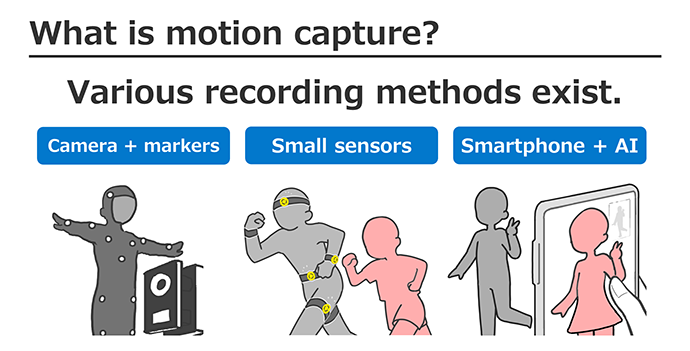
Main recording methods of motion capture:
・Measuring the positions of markers attached to the actor using many cameras
・Measuring movements using compact sensors attached to the head, hands and feet of the actor
・Using AI to approximate body movements in videos captured with smartphones and other devices
Cygames uses the marker positioning method. Within the studio, special infrared cameras are set up to surround the stage. A special suit worn by the actor is equipped with spherical “markers.” These markers are covered in a special reflective material which reflects infrared rays from the cameras, allowing the cameras to determine the position of each marker. If anything obstructs the camera or marker, the marker’s position cannot be determined and making accurate measurements becomes difficult.
In the entertainment industry, motion capture is primarily used to animate characters. Motion capture is also used in other industries, such as sports, medicine, technology, and automobile testing.
A new approach to problem solving at Osaka’s motion capture studio
- Technical engineer at Osaka’s motion capture studio Yoshihisa
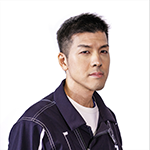
- After working as a researcher at a national sports organization and handling product development for a sporting goods company, Yoshihisa joined Cygames in 2021. He is currently a technical engineer at Osaka’s motion capture studio, and he is in charge of managing the various equipment at the studio, establishing rules, and handling overall system operation.
- Coordinator at Osaka’s motion capture studio Kenta
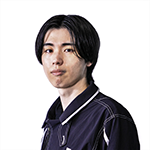
- Kenta attended a special makeup school when he was younger, and in his previous job, he handled the 3D printing and processing of theme park decorations and small items appearing on TV programs. He currently works as a coordinator at Osaka’s motion capture studio, coordinating schedules and acting as the point of contact when recording requests are received from projects, in addition to managing the exchange of deliveries post-recording.
These two spoke at CEDEC+KYUSHU2023, and below they explain the three major efforts taken at Osaka’s motion capture studio to improve the workspace.
Three major efforts to improve the workspace:
1: Introducing 3D printers to create more wieldy props
2: Implementing aluminum frames to solve problems relating to large props
3: Utilizing area projection to improve recording efficiency
Released in October 2023, the 2nd promotional video for Osaka Cygames’ motion capture studio focuses on newly introduced equipment and new techniques made possible at the studio. Check out the video below.
I’d like to ask about the new initiatives you discussed at CEDEC+KYUSHU2023. First, why did you start using 3D printers?
Kenta: Previously, we used props made from wood and other materials available at hardware stores. However, it was difficult to get a sense for the weight and exact shape of the props ahead of time, and the quality of the finished product depended on the skill of whoever was making it. We also struggled to repair or reproduce props whenever they happened to break. However, we were able to start reproducing the weight and exact shape of props once we started using 3D printing. Being able to produce props more consistently like this allowed us to help the actors give more realistic performances.
It seems like you can change the weight and materials used for printing.
Kenta: That’s right. If you create your design within the relevant software, you can create props with precise specifications. Being able to individually modify the shape, weight, and material of an object means that you can preserve the shape of an object while modifying its weight, the position of its center of gravity, and its durability. As long as the data remains intact, a prop can be easily reproduced with or without additional modifications.
Kenta: We’ve received comments from actors saying that using more realistic props has made it easier for them to give more emotive and deliberate performances. Aside from props, we use 3D printing to create storage boxes for motion capture markers, along with covers to protect equipment such as cameras. The number of slots in a storage box corresponds to the exact number of markers that an actor will wear when performing, so it’s easy to know if you forgot to remove any markers when cleaning up.
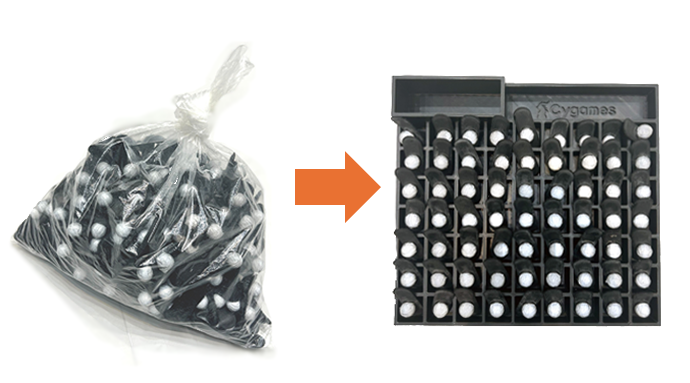
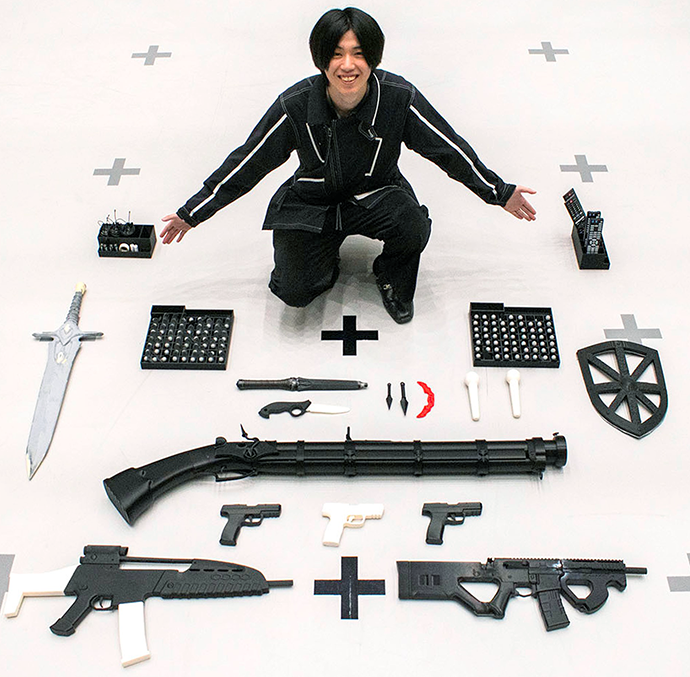
What made you decide to start using aluminum frames?
Yoshihisa: We sometimes receive inquiries from projects asking us about using stairs, such as “Could you get a shot of someone walking up and down 9 steps?” We built stairs like this in the past out of wood, but the stairs could be unsettling when they wobbled, and they have to be set up and held together every time with belts and screws. You also need somebody with sufficient knowledge of large props to assemble stairs like that, and carrying them from one place to the next is a significant physical undertaking. Wooden stairs were also a big obstacle for us when filming, as they created additional blind spots for the cameras which obscured the actors’ markers, thus reducing the quality of the data we could record.
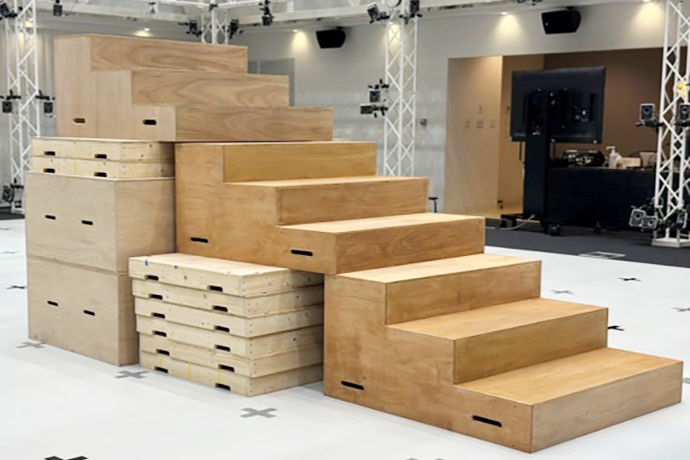
Yoshihisa: We knew for some time that using industrial aluminum frames was a possible option, and with the help of knowledgeable staff members we were able to implement them.
Using software at the beginning of the process allows us to create simulations to test the safety and structural integrity of the set, streamlining the set-building process. Thanks to an assembly process which uses nuts and bolts, even staff members who are not familiar with more complex tools can help with the process. The skeleton structure also reduces blind spots, making filming easier and more consistent.
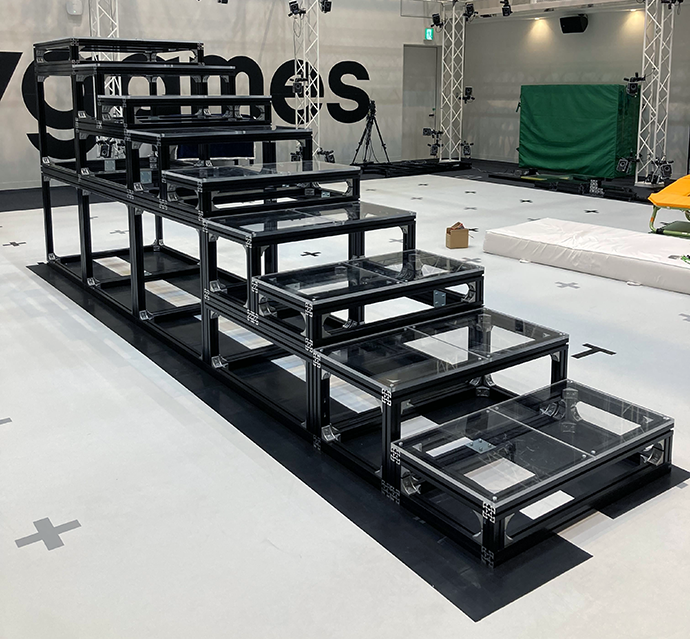
Next, please tell us about area projection.
Yoshihisa: We used to take measurements of in-game spaces and sets based on details we’d receive from projects, then measure everything out with a tape measure before marking the positions on the floor using tape. We’d also tape the floor to indicate to the actors where we’d want them to move.
However, if the set had to be moved frequently or there were a lot of actors, we’d have to use a large amount of tape. Not only did this drag out prep time, it was also confusing to keep track of what each section of tape was intended for.

Yoshihisa: We used to record for Relink by using tape and dragging plastic chains on the floor. One day, the representative of Osaka Cygames and Cygames President Watanabe stopped by and after observing our process, we were told that the process would be more efficient if we used a projector instead. Every staff member was working together to get the floor ready, but once we were told that this would be over instantly with a projector, it was as though scales fell from our eyes.
Kenta: It wasn’t always possible to know the best direction to face for a performance until after setting up the tape and testing it out. Sometimes, we’d have to peel off all the tape and apply it again just to change our orientation, but with a projector, all you have to do is flip the image. Making changes became a lot easier because of this, and since we’d often use 8 or 10 meters of tape at one time, we’ve been able to cut down on resources used.
Experts in multiple fields working together!
The unique characteristics of Osaka’s motion capture studio
What are the special qualities of the motion capture studio at Osaka Cygames?
Yoshihisa: We strive to be one of the best studios in the world by focusing on our facilities. To that end, we have a large number of cameras and various equipment set up in order to handle any type of recording.
Kenta: That’s right. We also have the advantage of being able to film wire work thanks to the 6-meter ceiling. We actually have a resident actor that we can quickly consult with about performances, and that same actor connected us with a wire team. As a result, we’ve created an environment where we’re able to smoothly arrange a pretty full-scale team for wire work while also coordinating actors for action scenes, dancing, sword fights, and more.
Yoshihisa: It seems to be quite difficult to control one’s movement while suspended with wires, and even when an actor is simply hanging in place, maintaining one’s posture for long isn’t feasible. Our resident actor also helps coordinate wire work alongside our filming staff, so we’re able to film a wide variety of wire scenes with varying levels of difficulty.
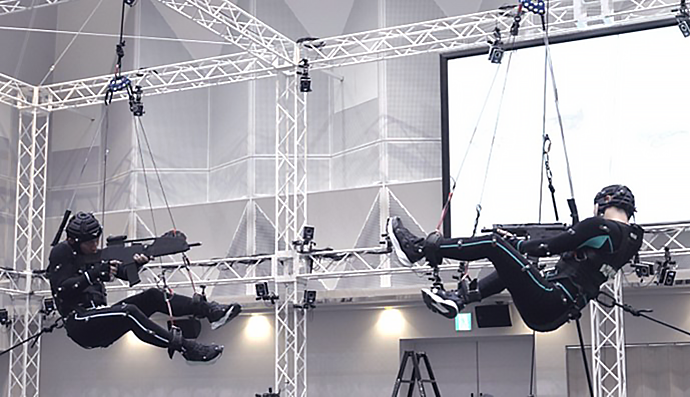
Could you tell us about the members of the studio?
Yoshihisa: Currently, Osaka’s motion capture studio team consists of about 10 people, and many of them joined us from outside the gaming industry. For example, one of our members used to be a university professor while also working at a motion capture studio, and another one of our members used to be in the automobile industry. We have a 50/50 split of male and female employees, and we have a well-balanced combination of engineers and artists. Half of our staff are in their 20’s, so many of our staff are especially aware of and interested in new trends.
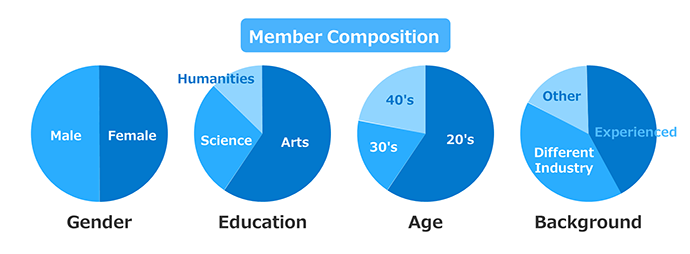
Yoshihisa: We sometimes hire people without prior experience when we anticipate future growth potential, and that’s how Kenta joined. The staff member coming from the automobile industry is somebody I met by chance, right as I was thinking about something specific that I wanted to do at the studio. That person was originally a programmer, and they are still making use of those skills today.
Kenta: Another special quality of Osaka’s motion capture studio is that staff from various backgrounds with different types of experience will get together and share their opinions, which allows us to take on increasingly interesting challenges, such as incorporating 3D printers and creating headgear.
Could you talk about creating headgear?
Kenta: An actor wears this device when we need to record facial movements. A camera is attached to the tip of the device, and this allows us to capture the actor’s movements and expressions. This device was developed by Cygames, aided by the use of 3D printing.
Yoshihisa: We started development out of a desire to create headgear that fits well and can be freely customized. Many companies will use similar products from other manufacturers in this industry, but I don’t think there are many companies that develop these devices on their own.
Kenta: With Yoshihisa’s advice, our staff member from the automobile industry who knows how to use CAD creates the design, and I use 3D printing to create prototypes and accessory parts. Our staff member from the manufacturing industry does the fitting, and another member with a lot of experience in studio management gives feedback. The development is a cooperative process that takes advantage of everyone’s unique skills.
What’s been the most meaningful work for you so far?
Yoshihisa: The Vol. 2 studio introduction promotional video was recorded along with the cinematics department, and we did everything we could in the studio. It was a lot of hard work to set everything up, but it was rewarding in the end.
Kenta: I end up interacting with a lot of people outside of my team, so as the point of contact for the studio, I pay very close attention to how I communicate with others in my work. I want everyone who uses the studio to be happy they were here, so I place a lot of value on creating a hospitable environment. More than just keeping the studio clean, I want to make sure that everyone who communicates with us has a great impression of who we are. I get a lot of personal enjoyment out of these interactions as well, and for me, it’s the most rewarding part of my work.
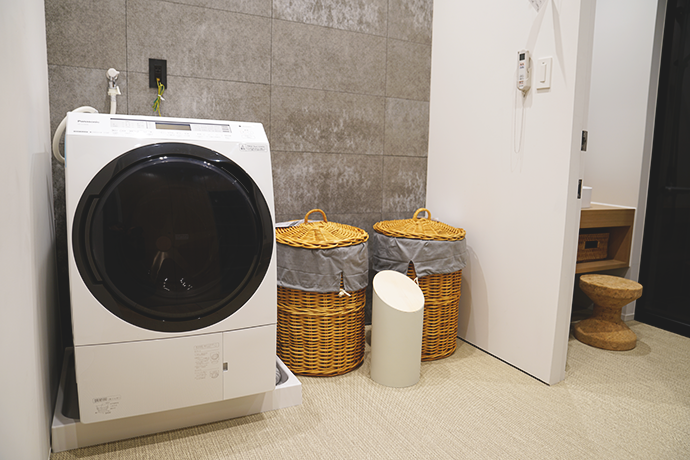
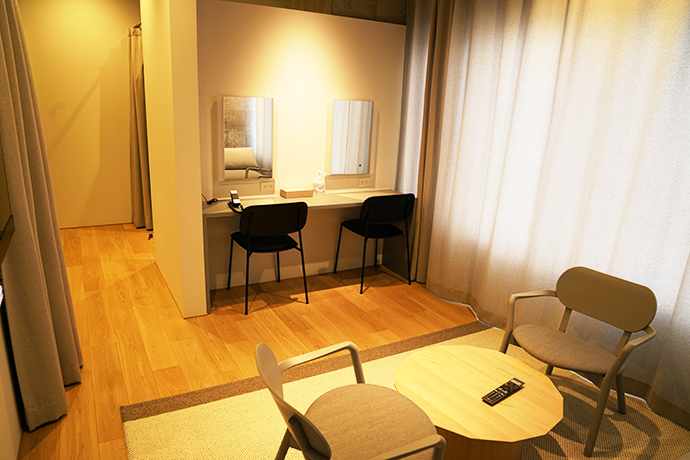
Bringing in more perspectives!
The future of the studio
The team seems to be getting stronger all the time. What would you like to see in a newcomer to the team?
Yoshihisa: I would be happy to have an experienced and highly knowledgeable person join us. Somebody with a variety of experiences and many years working in motion capture would likely possess a knack for a variety of things. On the other hand, having somebody without studio experience could also be interesting, and teaching them the fundamentals through on-the-job training would allow them to handle pretty much any basic task we’d need. However, it would be preferable if they also had some special skills, and being able to write programs would be helpful too.
It would be nice to bring in someone who could utilize knowledge that the rest of us aren’t familiar with, rather than simply bringing in somebody who can do what’s already being done. Having lots of people with the same general background can lead to too much uniformity in thinking, which can hinder growth. For example, even without a prior connection to the games industry, somebody coming from the film industry might recommend a way of filming that we wouldn’t have otherwise considered. This could present both us and them with fresh perspectives, allowing us to all grow together.
Kenta: Almost all of our work at the studio involves teamwork, and very few things are accomplished with only one person. People from outside the studio also come along, so being able to communicate is also necessary. It’s not that we need people who are “good with words,” but rather, we’d like to see people who are detail-oriented and are able to communicate smoothly with others.
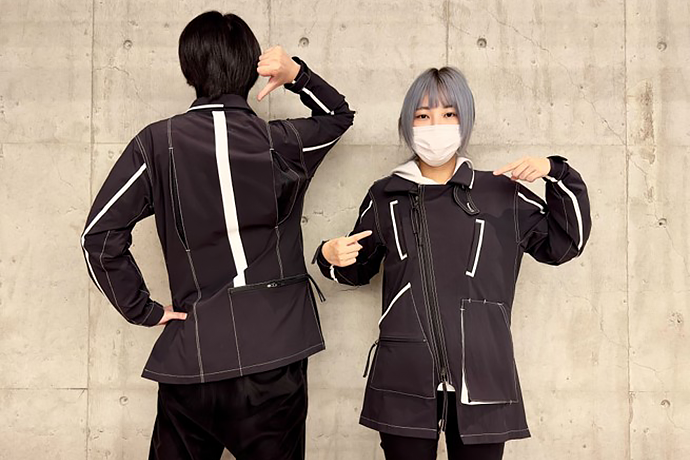
How do you want the studio to be developed moving forward?
Yoshihisa: With our world-class facility, our goal is to become the best motion capture studio in the world. One of the things we are doing to accomplish this is collaborating with other departments. For example, we’re working together with Cygames Research to establish new technology related to motion capture, and we hope to present future results of these efforts at an international conference.
Kenta: Another important characteristic of what makes Osaka’s motion capture studio so excellent is the range of talented individuals coming from various industries. Having experienced people with different backgrounds working together creates an environment where new methods and technology can be easily developed as we continue to introduce new equipment into our work. I think these are our studio’s unique strengths, and I would like to keep pushing these strengths even further.
This wraps up our introduction of the special features and new initiatives of the motion capture studio at Osaka Cygames, based on the talk given at CEDEC+KYUSHU2023.




